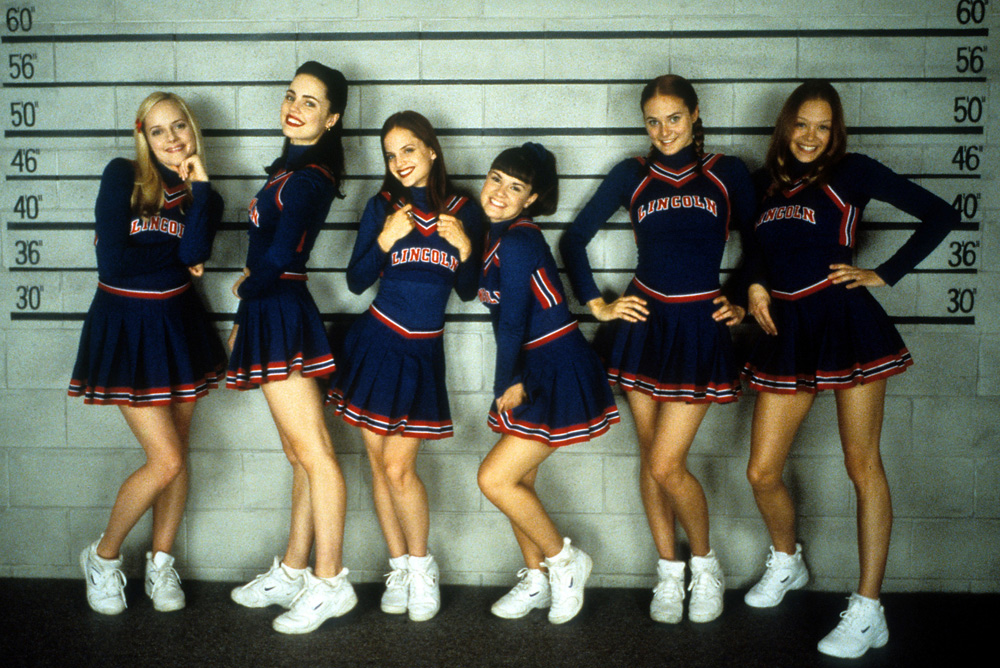When Francine McDougall was on the set of her first short film, an actor told her, “If I’m not wearing the right pair of shoes, I just can’t get into the character.”
“And I remember thinking, ‘Wow, I totally get that,” said McDougall, whose own attention to detail had drawn the interest of Hollywood. “So I always think about the environment that you’re in and the wardrobe. It’s all got to come together and it’s all got to be right to make the actors feel like they’re in the right place.”
It was this kind of attitude towards worldbuilding that would make McDougall one of the few who could capably pull off “Sugar & Spice,” a wicked high-wire act of a comedy that may have been seen as a disappointment when it was quietly released in the winter of 2001, months after “Bring It On,” a rival cheerleading film it had been competing against at every stage of production, became a surprise hit. Yet the film, which has been said to be loosely inspired by a real gang of felonious drill team members from Houston, was and remains a candy-coated delight, as sharply crafted as the heist films that Diane (Marley Shelton), Kansas (Mena Suvari), Hannah (Rachel Blanchard), Lucy (Sara Marsh) and Cleo (Melissa George) watch in preparation for their own score after Diane becomes pregnant with the child of their school’s quarterback king Jack (James Marsden). These days, McDougall cannot help but be a bit bemused that a midnight screening of the film this weekend at the New Beverly Cinema in Los Angeles will occur after “Reservoir Dogs.”
If it seems unbelievable now that something as subversive as “Sugar & Spice” was released by a major studio, it was actually intended to be the second in a series of female-oriented comedies at New Line, which had been pleased with the progress of the beauty pageant-turned ugly mockumentary “Drop Dead Gorgeous” that writer Lona Williams based on her own experiences of vying for Minnesota Junior Miss. Williams would take a crack at “Sugar & Spice,” once again cleverly looking inside the confines of a uniquely American rite of passage for women as they fight for agency within it, and though she would ultimately take her name off on the film after feeling it had gotten away from her in the wake of Columbine (the script is now credited under the pseudonym Mandy Nelson), her fingerprints remain in the acidic sense of humor that made “Drop Dead Gorgeous” endure as a cult hit, as well as her friendship with Conan O’Brien, who she met in the writers’ room of “The Simpsons,” and is name checked throughout as an unhealthy obsession of Cleo’s.
McDougall doesn’t remember any changes to the script after she came aboard, but she could identify with Lisa (Marla Sokoloff), the outsider sitting on the sidelines as a member of the B-squad who uses her time riding the bench observing the A-squad with plans to take them down, and as a visual stylist of the first order from a background in photography, the director sharpened the comedy’s edges with a blazingly bright aesthetic wit to counter its pitch black premise, highlighting the fear and anxiety lurking just underneath the surface in an image-conscious culture where economic concerns and issues affecting women are often shoved under the rug. Imagining a winter assembly at the high school as a Busby Berkeley-esque musical extravaganza and orchestrating the scenes of cheerleader banter that are every bit as acrobatic as the back handsprings they perform, the director displayed a fiercely original talent that the film’s box office reception obscured, and although McDougall looks back on the film with mixed feelings now when, as a product of its times and go-for-broke spirit, it involved some needlessly homophobic jokes and cavalier violence, she generously reminisced about what went into seeing such a bold vision through to the end, an even more daunting task it would turn out than simply navigating such an arch tone and a tight schedule when she would spend much of the shoot in a sling.
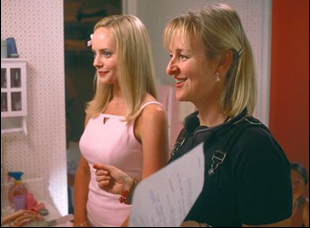
I was prepping another movie and we had a blinking green light, so it wasn’t all the way and things were kind of stalling with the studio. My agent sent me this script and said, “You should read this.” And I said, but I’m working on this other movie and he said, “Well, just read it.” And I liked it and [my agent] said, “Why don’t you just have a meeting with them?” So I went to New Line and met with everyone and bizarrely got the job. [laughs] So I left the other movie and started on “Sugar and Spice.”
It’s been said there was a competing cheerleading movie across town. Did you know what you were getting into?
No, we all knew. [laughs] They were casting at the same time and we were all looking at the same actors, so yeah, it was definitely tricky.
At least you must’ve known about Marla Sokoloff since you had worked with her on “The Date,” one of your early shorts. Was she in mind from the start?
Marla was in the second short film I ever directed and I got lucky with her. When I was casting for that, I just wrote a letter to her agent and I’d sent my first short film [“Pig!”], which had been — humblebrag — fairly successful, and said how much I loved Marla and how much I thought she’d love this role. She called me and said she wanted to do it, but I didn’t have any money to pay her and she did my short [anyway], which went really well. Then I always promised her, “When I get a big gig, I’m going to make sure I hire you on something so I can pay you back.” So not only did I hire Marla, but the role was so perfect for her and I was psyched that we got her. She’s such a great actor.
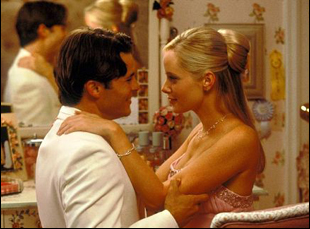
The studio was already looking at actors before I got onboard, so they had done a bit of the legwork and they had met with Marley and she was great. I knew her because I knew Beau Flynn, her boyfriend at the time, so I was familiar with her and her work and when I met her, I was like, “She’s so perfect. She’s so Diane.” And James, he’s so talented and seeing him and Marley together and seeing them read together and everything, it just felt so right and he totally got that character. When we were casting for Jack, she would come in for the reads and she would be there to read with all the actors we were reading with and she was such a great sport and a real team player. Not a lot of actors would do that and she was awesome. I got lucky with every single person in this film. Everyone was just amazing.
Coming from Australia, did you feel that gave you a different perspective on this?
At the time, I’d been living here for seven or eight years, and in Australia, you grew up on American TV — we did have some stuff that was made locally, but the majority of our television was American — so everyone grew up on “The Brady Bunch” and “Happy Days” and all that stuff, so wasn’t something hugely different. We got it.
But I didn’t know all that much about American football prior to this movie, so I actually bought one of those books, “Football for Dummies” and paged through it because there was no direction in the script about how that all was going to play out and I was figuring out how do I do this? And how do I make Jack the hero because he’s the quarterback. I wanted him to score the touchdown, so I’d be asking my friends, “Does a quarterback ever make a touchdown [by himself]?” (Laughs) Because it doesn’t seem like it does normally, but they’re like, yeah, there’s a rare occasion a quarterback can make a touchdown.” So I’m like it’ll make Jack even more of a hero.
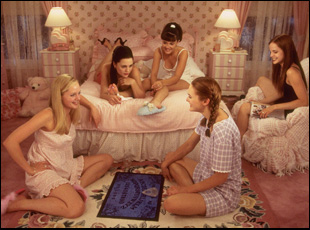
Like the choreography [for the cheerleading scenes], I figured out the shots I needed to tell the story and then we were shooting at night. I don’t know if you’ve ever been to Minnesota, but there’s a lot of bugs. so we had to spray the field because when we scouted that location, I was dressed top to toe clothing and everything because I knew about the bugs, but getting home that night, my legs were just covered in bites. They would get through anything and I’m like, “Oh my gosh, we have to deal with this” because there’s so many bugs in summer and my worst fear was that James was going to get eaten alive by all these bugs. But the football was really fun.
Was shooting in Minnesota an obvious choice?
I imagine there were some tax credits involved and the Minnesota Film Board were very accommodating. They flew us out to have a look and they had a crew base there, so we didn’t have to bring in that many people. We mainly shot in and around Minneapolis and we used a lot of local actors, primarily local crew and fabulous, fabulous locations, so it worked out really well. We were shooting during the early summer and I’m pretty sure the school was shut down, so we had the run of it and I don’t think a lot of people had shot there at the time, so everyone was very accommodating and wanted to be part of it. And you can really see the money on the screen — all the production design and the locations and the extras and everything, it’s really all there. It was a great decision to shoot there because it really helped us a lot.
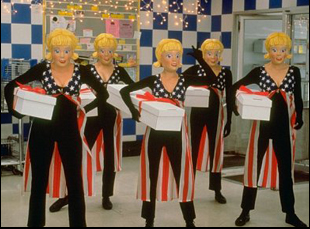
Yeah, it was awesome. I had an incredible production designer Jeff Knipp, and we had the same vision. He really knocked it out of the park, and again, we got lucky with the locations [like] maybe that therapist’s office was in the high school and we could use the same location for multiple scenes. We did have a lot of location moves on some days, but Minneapolis is really rich with fabulous locations, and part of it was that there were so many girls and they all had different personalities, so we wanted to give each of them their own color based on what their character was like and went from there into the girls’ clothes and their bedrooms and wove that theme throughout the whole thing. Cleo was racy so she got red, Diane was the head cheerleader and was the goody-goody two-shoes, kind of [laughs], so she got pink. Everyone got their color.
Everyone seems like they’re on exactly the same page with the tone, which must’ve been difficult since it’s very particular. Was it difficult to achieve?
That’s a good question because not long before we went intro preproduction, Columbine had happened, so everyone was definitely a little nervous about putting kids with guns. I talked about it with the studio and I said I think we need to take this kind of heightened approach to it so that it doesn’t feel that real because I’m the last person that wants to put a gun in anyone’s hands, let alone a child, so we made it feel a little tongue-in-cheek.
Visually, that comes through when there’s a lot of direct address and whip-pans. What was it like figuring out a shooting style?
The trickiest part for me was that there were so many people in every scene because there’s a handful of scenes where it’s just Jack and Diane, but then you’ve got all the cheerleaders in every scene, so it’s figuring out how to get your master, how to get the coverage and still make it look interesting. I feel like I didn’t sleep for three months when I made this film. [laughs] It was a lot of work figuring out how to do it and how to make it look good. My [cinematographer] was Robert Brinkmann and he was really great and brought a lot to it. It was my first time working with him and I did a lot of work in prep. I storyboarded a lot of the scenes myself and brought that and shared it with everyone so they knew how I wanted to shoot everything — transitions from scene to scene and all that.
I also worked with an editor I worked with before and I would talk to her about my idea of going from scene to scene and how that transition would work and [because] I storyboarded all my transitions through the whole movie, I knew how it was going to cut together. When I first started working in film as a production assistant, I worked on a music video Alex Proyas was directing and it was on a stage. If he just needed two seconds of something, he would shoot those two seconds and nothing else — nothing on either end. And I thought, “Wow, that’s ballsy.” I PA’d on a couple of his jobs and to see how he did it, I thought was really great, so when I shoot, I try to be really economical with shooting and I know exactly what I want and not just keep the camera running. Back when I did “Sugar and Spice,” it was all on film as well, so you can’t keep the camera running. [laughs] Otherwise you’ll have people yelling at you, so it’s good to know what you need.
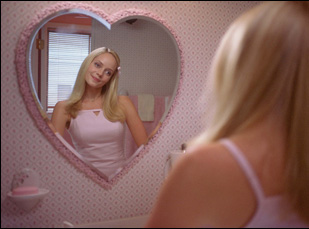
It was definitely a marathon. At the end of the first week of the shoot, I was involved in a really bad car accident – not my fault, but we had just been to watch rushes and we were on our way to the set and this guy T-boned me. I ended up in the hospital for three days and the production shut down for a week and I had surgery. It was an absolute nightmare. And during that week, I was like I don’t know if I can go back. I was so wrecked from this car accident and I was already really tired from the shoot, so I went back and it was probably the hardest thing I’ve ever had to do in my life.
By the time I got to the end, my arm was in a sling, I had a metal plate in my arm, I had all this soft tissue damage and because of the shoot, I wasn’t able to do physical therapy, so by the time I got to the end, I was an absolute wreck and it was just a relief that it was over and done. For me, it was definitely a huge accomplishment because of all the things we had to overcome. But I do a lot of commercials and short-form stuff and I think it’s always when you get to the end, even if it’s a one-day shoot, it’s like you’re going to battle and you’ve got to love the smell of napalm in the morning, as they say.
I’m even more impressed now than I was, knowing that and it’s long been one of my favorite films.
That’s very sweet. I’ve got to say back when we shot it, which was 1999, it was a very different time. I’ve actually watched it recently for the first time in over 20 years and there’s a lot of stuff in there dialogue-wise — it’s a very un-PC film and for me, it’s actually pretty hard to watch. I’m just like, “Wow, how could no one say anything when we were shooting this?” So I’m definitely proud of the film and there’s so much I love about it, but there’s a little bit of a cringe factor for me because it’s hard to watch now and I’d feel remiss if I didn’t bring that up. Still to this day, I meet people that are like, “Oh my God, I love that film,” and I know the film has somewhat of a cult following, but there’s a lot about it that’s tricky.
“Sugar and Spice” will screen at the New Beverly Cinema in Los Angeles on August 20th at 11:59 pm.




